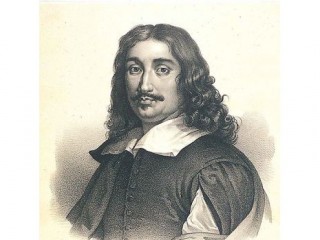
Jusepe De Ribera biography
Date of birth : 1591-01-12
Date of death : 1652-09-02
Birthplace : Xativa, Valencia Province
Nationality : Spanish
Category : Famous Figures
Last modified : 2011-08-25
Credited as : Artist painter, tenebrism,
Jusepe de Ribera was a Spanish painter and etcher who worked in Naples. Stylistically, his paintings show the progression from the early to the late baroque.
Information concerning the life and personality of Jusepe de Ribera is sparse. He was born the son of a shoemaker in Xativa, Valencia Province. He appears to have gone to the city of Valencia while still a boy, but nothing is known of his possible artistic training there. As an adolescent, he traveled to Italy and spent time in Lombardy. Next he was in Parma, from which, it is said, he was driven by the contentious jealousy of local artists. He located himself in Rome until an accumulation of debts forced him to flee. Finally he settled in Naples, where in 1616 he married Caterina Azzolino, the daughter of a painter, by whom he had seven children between the years 1627 and 1636.
The Academy of St. Luke in Rome elected Ribera to membership in 1625, and 6 years later the Pope conferred upon him the Order of Christ. It is understandably speculated that Ribera revisited Rome for these events. Being sought after in Naples by the Church and the various Spanish viceroys who ruled there in the name of the Spanish monarchy, he dismissed the idea of returning to his homeland. He was quoted as saying that he was honored and well paid in Naples and that Spain was a cruel stepmother to its own children and a compassionate mother to foreigners. Nevertheless, he generally added his nationality when he signed his works. This practice inspired the Italians to nickname him "the Little Spaniard" (Lo Spagnoletto).
The last decade of Ribera's life was one of personal struggle. He suffered from failing health, the taunts of other artists that his fame was "extinct," and difficulty in collecting payments due him. Nevertheless, he kept it from being a tragic defeat by continuing to paint until the very year of his death in Naples. Actually, he was the victim of the local politics and finances. Naples was in the throes of a severe economic depression for which the foreign rulers, the patrons of Ribera, were naturally blamed, and the desperate citizenry was rioting in the streets. It is significant that Ribera continued to receive commissions in such a time, even if there was a dearth of payments.
Ribera was inventive in subject matter, ranging through visionary spectacles, biblical themes, genre, portraits, mythological
subjects, and portraits of ascetics and penitents. Three stylistic periods are pointed out by Elizabeth du Gue Trapier (1952): 1620-1635, dramatic chiaroscuro, dry and tight technique with the major influence from Caravaggio, as in the Martyrdom of St. Andrew (1628); 1635-1639, soft luminosity, sensitive line, and heavy impasto with influences from the Carracci, Guercino, Guido Reni, and Correggio, exemplified in the Ecstasy of Mary Magdalene (1636); and 1640-1652, looser brushstroke and less detail with a return to the Caravaggesque manner, for example, the Communion of the Apostles (1651). In etching he employed a painterly technique, refined and precise in the details.
















